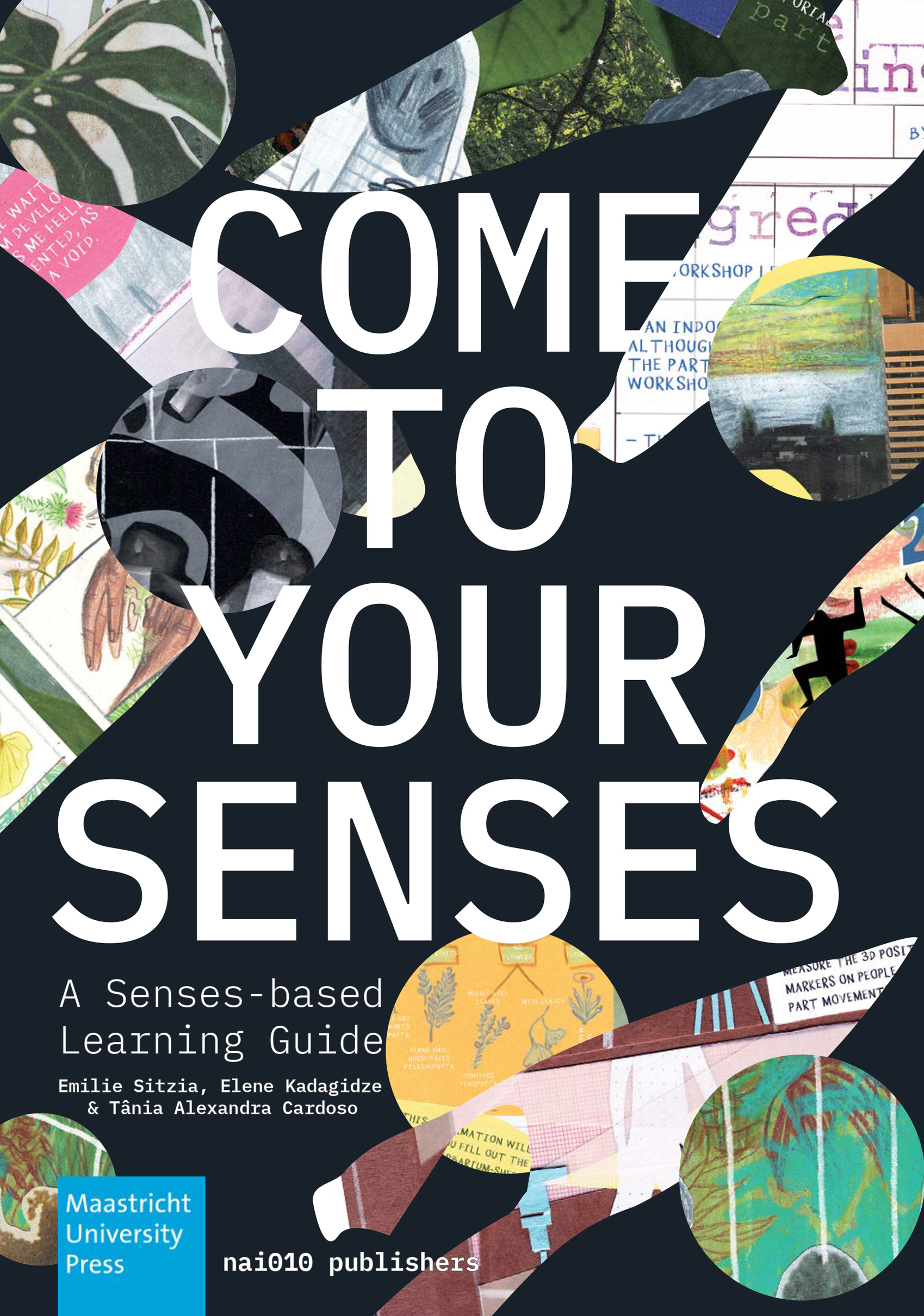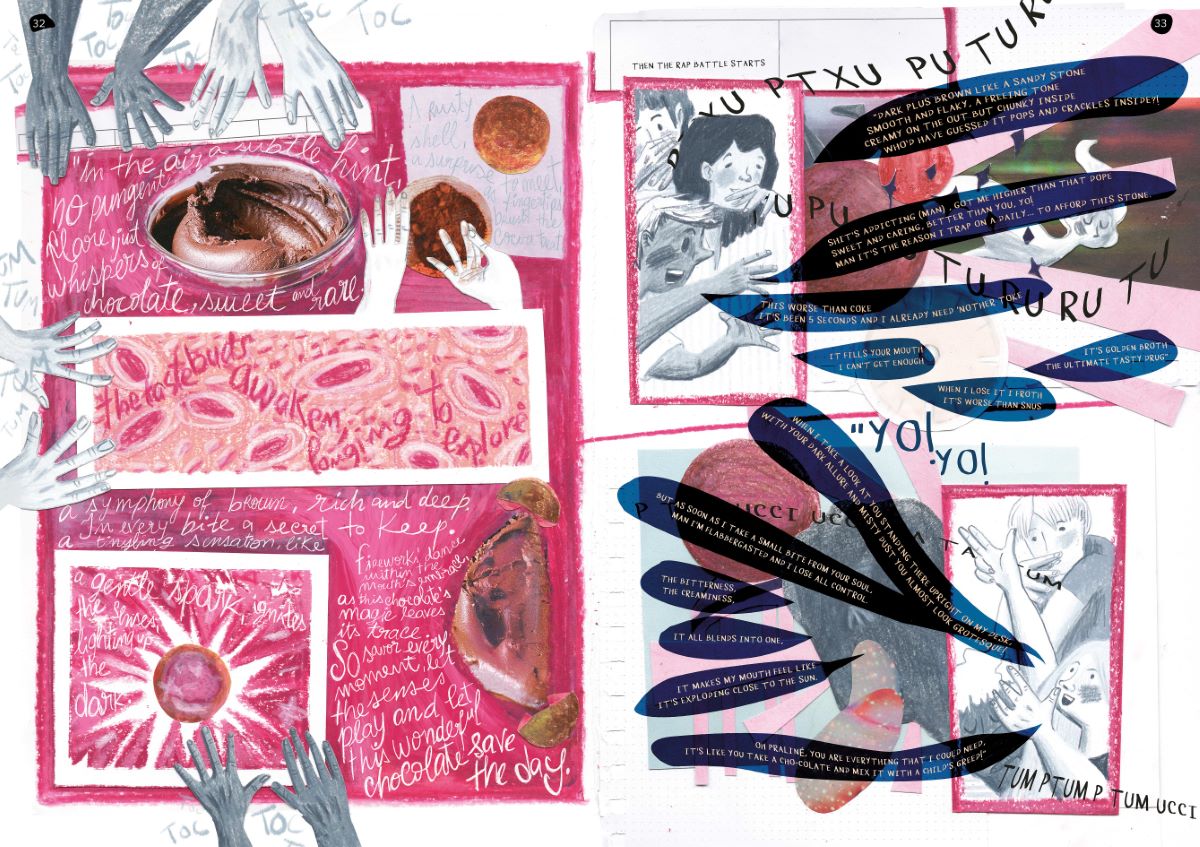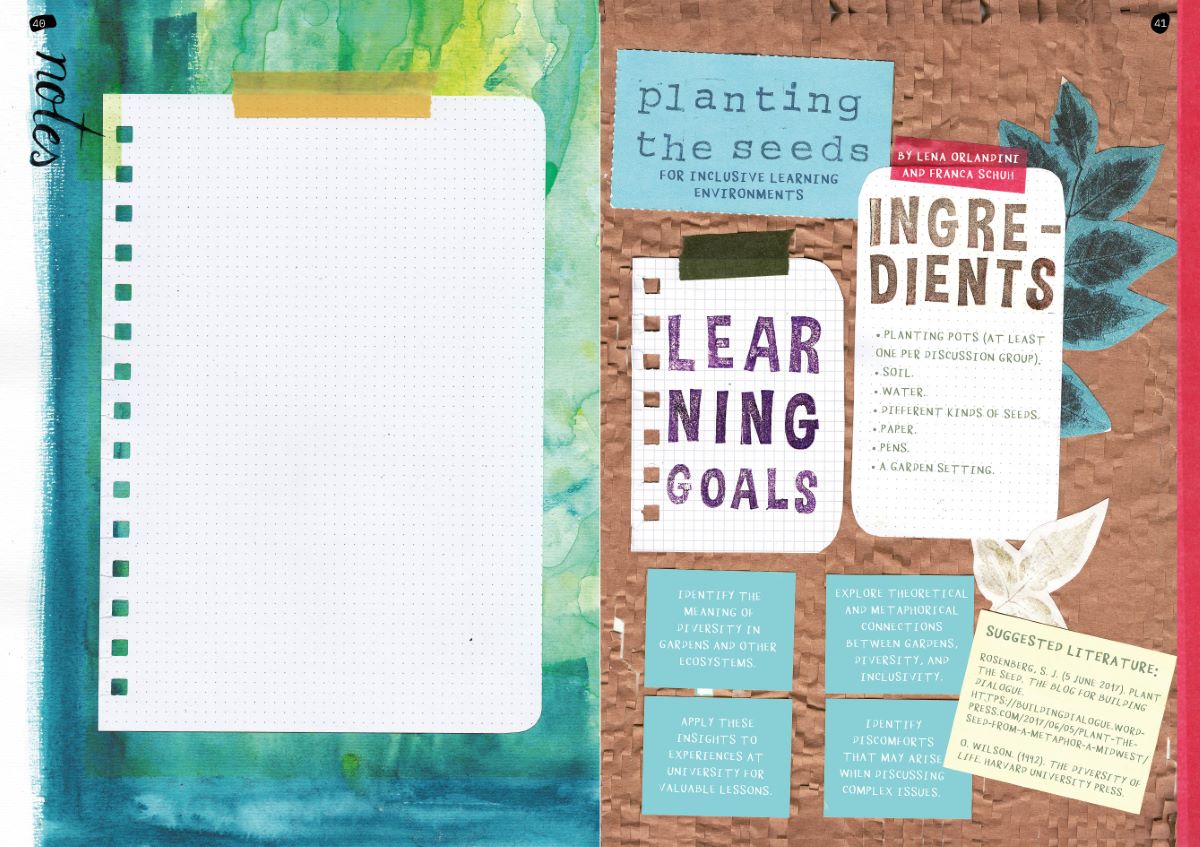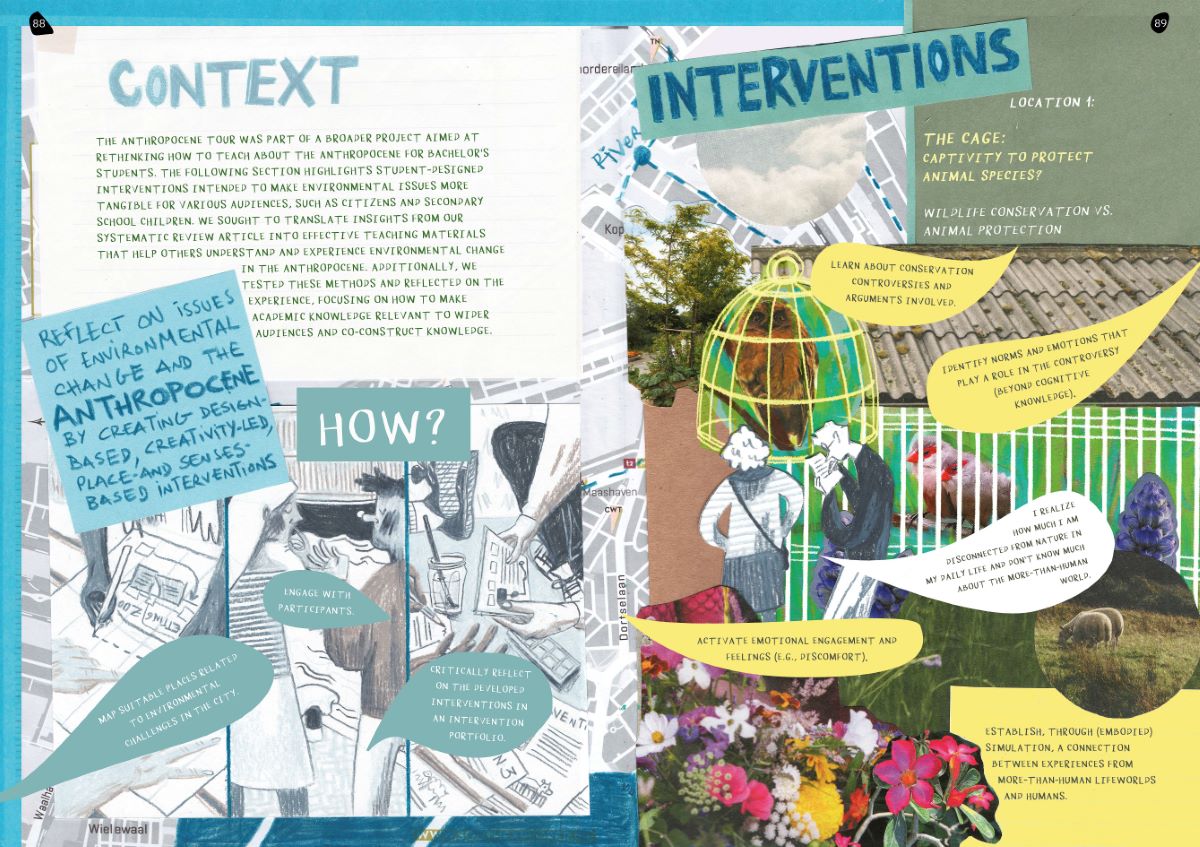Nicolle Bassie-van den Elst is passionate about personal development and has a deep inner drive to empower people to become the best version of themselves, allowing their true potential to shine. She has always been fascinated by the factors that positively influence this process. Highly attuned to the effects of energy and sensory environmental stimuli herself, she has consistently explored how these stimuli can be leveraged to positively reinforce personal well-being, organisational performance, and learning – in her roles as a lecturer, strategic process and relationship manager, advisor, and coach.
Tânia A. Cardoso (Orcid) is an illustrator, trained as an architect and urbanist. She completed her PhD at the University of Amsterdam on “The Illustrated Cityscape”. Her innovative study, a product of her unique blend of fields, dives into the potential of illustration as a captivating form of urban communication. Drawing from her experience as an illustrator-researcher, she artfully explores the poetics of everyday life and reportage art, using her illustration work as reflections and redefinitions that challenge the urban environment, offering a fresh perspective and innovative methods. As a result, her style is not “one size fits all” but reflects the specific contexts of each project. The results of her research led her to co-create the research group WARP with Prof. Alice Twemlow and to establish StudioTako (https://www.studiotako.net/), a platform for creating visual storytelling, urban chronicles, research, collective mapping, and comics. Her work has been featured in several international exhibitions, most recently alongside her talented fellow Rotterdam artists in “Drawn Rotterdam: May I Exist?” at Kunsthal Rotterdam.
Carissa DiCindio (Orcid) is an associate professor in art and visual culture education and co-director of the Graduate Certificate in Museum Studies at the University of Arizona. Her teaching and research centre on art museum education, with a specific focus on museum-community partnerships, university museums as spaces for collaboration and innovation, and building opportunities for dialogue and connection in art museum programming. DiCindio was formerly the curator of education at the Georgia Museum of Art, where she worked for 14 years. She holds an MA in art history and a PhD in art education from the University of Georgia.
Roy H. J. Erkens (Orcid) is an associate professor in evolutionary diversity and biogeography (System Earth Science, Faculty of Science and Engineering) at Maastricht University (UM). He has 25 years of experience in university education, research, and policy. His career is mainly education-focused. He was involved in developing several undergraduate and graduate programmes at UM and has co-developed and taught numerous modules at UM and elsewhere. He was chairman of the Educational Programme Committee and vice-chair of the Board of Examiners. He regularly publishes on his research on (tropical) biodiversity, also based on work with his students.
Johanna Firley is a graduate in Global Studies from Maastricht University and a master’s student in Socio-Ecological Economics at WU Vienna. Born in Germany, she spent much of her childhood outdoors, where her connection to nature first took root. Today, her academic and activist work focuses on climate justice, ecology, and human-nature relationships. The honour’s project (Re)Living with the Living offered a meaningful opportunity to explore how gardens can shape environmental perception and educational experiences beyond the traditional classroom setting.
Anna Harris (Orcid) is a writer, anthropologist, doctor, and maker. She holds a chair as professor of anthropology and medicine at Maastricht University, in the Faculty of Arts and Social Sciences (FASoS). Her ethnographic fieldwork focuses on medical practices and other crafts. Her research and teaching focus on themes such as sensoriality, materiality, learning, embodiment, and medical technoscience. She recently completed an ERC-funded Starting Grant project called Making Clinical Sense, which examined the role of technologies in medical education. She currently leads an ERC-funded Consolidator Grant project on creativity in hospitals and clinical waste called The Upcycled Clinic.
Femke Jongen-Hermus studied medicine in Maastricht, graduated from the postdoctoral Tropical Course at the Tropical Institute in Antwerp, and subsequently worked abroad in Tanzania, where she taught medicine and infectious diseases. She also began developing the Clinical Skills Programme (Skillslab), which included capacity building at the institute. Back in the Netherlands, she worked for Soa Aids Nederland and the Department of Clinical Skills at UMC Utrecht. For over nine years, she has served as the director of the Skillslab in the Faculty of Health, Medicine, and Life Sciences at Maastricht University.
Elene Kadagidze is a researcher, art historian, and educator. She has always been fascinated by the way we embody the spaces we’re in, the way our senses develop over time, and how they’re more involved in our lives than we give them credit for. With a bachelor’s degree in art history and theory and a master’s degree in arts and heritage, she explores the intersection of the senses and their interweaving in the fields of art and education, examining how both fields benefit from the involvement of the senses in their practice. She was a part of the SBL project from the beginning, during which she researched, designed, and implemented various sensory approaches to learning into university education.
Ike Kamphof works as a philosopher at the Faculty of Arts and Social Sciences, Maastricht University. Her research focuses on the aesthetics and ethics of care networks, specifically in psychogeriatric care and multispecies relationships. In her work, she combines ethnographic fieldwork, phenomenological observation, and philosophical reflection. She recently wrote on walking practices as a research methodology. A core part of her teaching centres on heightening awareness of the sensuous body as a source of knowledge, which she also pursues in projects with external partners, such as Marres, House for Contemporary Culture (Maastricht) and Natuurpunt (Leuven).
Kaspar König is an interdisciplinary artist and designer based in Zurich since 2012. With a background in design, sound art, and performance, he seamlessly integrates these disciplines to create works that resonate deeply with their context, environment, and audience. As a former professor of sound art and composition at the University of Music in Mainz, a researcher at Zurich University of the Arts (ZHdK), and a lecturer at the Lucerne University of Applied Sciences and Arts (HSLU), König connects the audible elements of our surroundings with art, sustainability, and a zest for life.
Ilse van Lieshout operates at the intersection of art, education, and therapy. With a background as a visual arts teacher, artist, creative therapist, and educationalist, she weaves together diverse disciplines to help people reconnect with themselves and the world around them. From 2015 to 2024, she shaped and led the education department at Marres, House for Contemporary Culture, where she fused learning with experience. Alongside this, she worked independently as a creative therapist for individuals with acquired brain injuries, using the power of imagination as a tool for healing and well-being. Today, Ilse shares her expertise and curiosity as a researcher at Fontys University of Applied Sciences, contributing to the research group Education in Connection. Her areas of interest include self-efficacy, sensory perception, and human flourishing.
Christopher McCrum (Chris) (Orcid) is an assistant professor in the Department of Nutrition and Movement Sciences, Maastricht University. His core research focuses on the control and adaptation of gait stability in both healthy and clinical populations, with a particular emphasis on reducing falls risk among older adults. Additionally, he has researched the relationship between muscle-tendon biomechanics, vestibular function, and gait stability. Chris is also interested in human locomotion more broadly and has been involved in studies of human jumping and running.
Dominik Mahr (Orcid) is a professor in digital innovation & marketing at Maastricht University, specialising in the impact of digital data and technologies on individuals, organisations, and society at large. He combines state-of-the-art research with practical experience and is a co-founder of the Maastricht Centre for Robots (MCR) and the Digital Experience Lab (DEXLab), which drives research on emerging technologies such as Extended Reality (XR), AI, Service Robots, and Digital Voice Assistants. His work has been published in leading scientific journals in business, information management, design, and healthcare, and he has received multiple prestigious awards for his contributions to education, impact, and research.
Lena Orlandini studied European studies at Maastricht University and is now a master’s student in human rights and humanitarian action at Sciences Po Paris. She has always been interested in the spaces we live in and how people conceptualise them. Through the Planting the Seeds for Inclusive Learning Environments project, she explored how gardens can create a space for discussion and confrontation within academic environments. This project aims to challenge the traditional conceptualisation of learning environments and affirm gardens as mirrors of our society: shared spaces where diverse forms of life coexist.
Hans Savelberg (Orcid) is a professor in the field of evolving academic education at Maastricht University. He performs research within the domains of both human movement science and educational sciences. His passion for educational sciences involves assessing the determinants of intrinsic motivation in students and staff, and innovating educational settings in accordance with these findings. In human movement sciences, he focuses on exploring the relationship between excessive daily sitting time and health outcomes, as well as cognitive performance, and on understanding the relationship between muscle function and performance capacity in various types of human movement, including sports, daily life, and rehabilitation. At the Faculty of Health, Medicine, and Life Sciences, he is an educational programme leader, mentor, and tutor.
Franca Schuh is a master’s student in international sport development and politics at the German Sport University Cologne. During her bachelor’s in European studies at Maastricht University, she had the opportunity to engage with many topics related to nature and the environment, as this subject area is very close to her heart. Within the honours programme, she participated in the project ‘Planting the Seeds for Inclusive Learning Environments’. She really appreciates the new perspectives she gained while getting to know the learning with gardens approach and its relevance for aspects of diversity and inclusivity.
Germaine Sijstermans is a composer, installation artist, and clarinettist whose work spans site-specific installations with music, compositions, and outdoor installations. She creates environments – sonic, physical, or both – that act as “Erscheinungsräume”, inviting musicians and audiences to discover their personal sensory and phenomenological experiences, embracing the influence of environment and the beauty of coincidence. Her music emphasises timbre and texture, inviting interaction among sounds, melodies, performers, and space. Open scores invite performers to explore abstract sound materials, allowing them to unfold and bloom with a non-linear approach to time that is organic. Her installations are transparent spaces within spaces, crafted from materials such as thread, stone, paper, and oil.
Emilie Sitzia (Orcid) holds a special chair at the University of Amsterdam (Word and Image) and is an associate professor in cultural education at the University of Maastricht. She is a Comenius Leadership Fellow and PI of the research project Senses-based Learning (NRO-funded). She serves as an advisory board member for the Koopman Collection (KB) and is an ambassador for the Illustration Embassy Amsterdam. She is currently the co-director of the Word-Image research group at the University of Amsterdam. She specialises in museum participatory practices, the impact of art on audiences, word/image interdisciplinary studies (especially French nineteenth- and early twentieth-century literature), and digital and sensory education. Her research spans the fields of history, literary studies, art history, museology, cultural education, and sociology. She focuses on issues of storytelling, identity, and multimodality in space, in text, and in images.
Anton Ulaska is a master’s student in international security at Sciences Po Paris. Originally from Finland, nature has always been a central part of his life. As part of the honours track at Maastricht University, he joined the garden project (Re)Living with the Living, which reshaped his perspective on people’s relationships with the environment. The project encouraged him to explore how gardens can be integrated into academic lives, not just as an environment, but as places with agency that can help students to comfort themselves and contribute to the disciplines they study.
Ragna Zeiss is an assistant professor in science and technology studies at the Faculty of Arts and Social Sciences at Maastricht University. Her research explores environmental and sustainability issues, including the social and material construction of clean drinking water, science-policy boundary work regarding environmental modelling, knowledge brokerage in sustainable sanitation and wastewater treatment, and multispecies mobility in (urban) environments. In her teaching, she is interested in diverse ways of knowing and learning in environmental education, including place-based and senses-based approaches.





